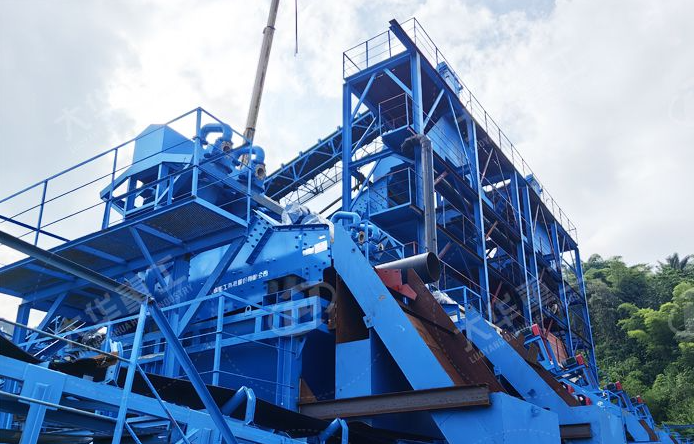Expected Application Effects in Construction Waste Projects
Resource Utilization Aspects
Improved Resource Utilization Rate:
By processing granite and combining it with construction waste, recycled aggregates can be produced. The high hardness of granite enhances the overall quality and performance of the recycled aggregates, increasing the resource utilization rate of construction waste and reducing reliance on natural sand and gravel.
Expanded Variety of Recycled Products:
The combination of granite and construction waste not only produces conventional recycled sand and gravel aggregates but also enables the manufacturing of higher-strength and better-performing recycled bricks and concrete, catering to diverse construction project requirements.
Economic Benefits

Reduced Production Costs:
Granite resources are relatively abundant, and processing it for construction waste projects can lower the costs of acquiring raw materials during the treatment process. This reduction in costs enhances the competitiveness of recycled products in the market and increases economic profits.
Creation of New Economic Growth Points:
New types of recycled building materials may open up new market demands, particularly for projects that require high material performance, thereby creating new economic growth opportunities for businesses.
Environmental Benefits
Reduction of Waste Emissions:
Effectively utilizing more granite waste and construction debris reduces waste emissions and accumulation, lessening the occupation of land resources and alleviating the pressure of "waste encircling cities."
Decreased Dependence on Natural Resource Extraction:
Recycled materials can replace a portion of natural sand and gravel in construction projects, reducing the extraction of natural stone and aggregates. This practice helps protect natural resources and the ecological environment, aligning with sustainable development goals.
Social Benefits
Promotion of Sustainable Development in the Construction Industry:
This initiative supports the promotion of resource utilization concepts and technologies in construction waste management, facilitating the industry's transition towards greener, more environmentally friendly, and sustainable practices, while improving resource efficiency and environmental standards.
Meeting Social Construction Needs:
The produced recycled building materials can be used in various infrastructure projects, including roads, municipal works, landscaping, riverbank protection, and public squares. This contributes to meeting the demands of social infrastructure development and urban growth, thereby supporting social stability and development.

